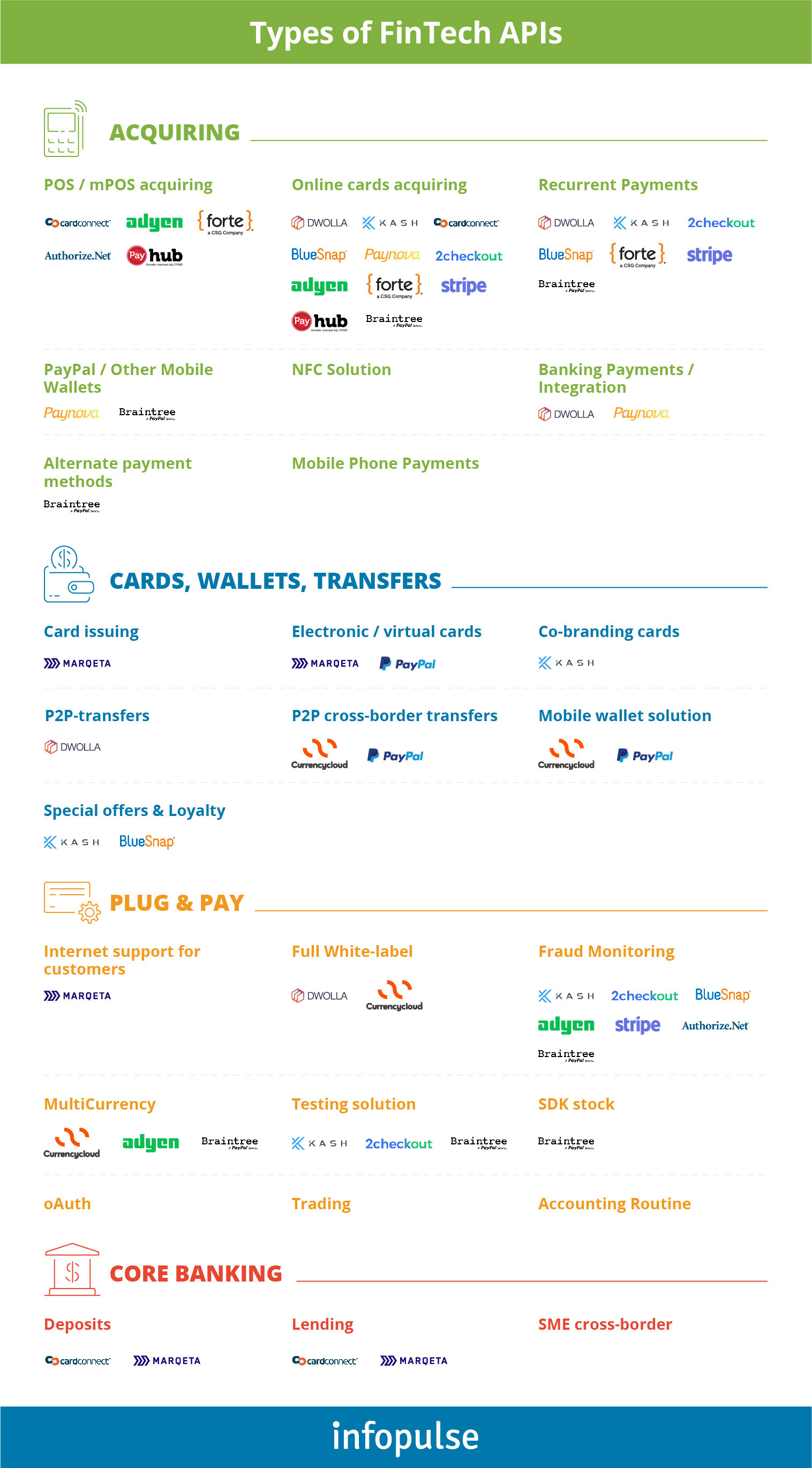Mobile Banking Trends: the Rise of BaaS and Marketplace Banking
In our new installment of the ongoing mobile banking trends series, we’d like to focus on how banks can retain a central spot in the customers’ lives and sustainably venture into new business verticals via two emerging business models – Banking as a Service (BaaS) and Marketplace banking.
Why Banking as a Service is a Winning Approach to Diversifying Revenues and Risks
So, what is banking as a service? In short, it is an end-to-end process that enables the provision of core banking services over the web, on-demand. In essence, this business model enables banks to extend their core services to non-financial companies and enable them to directly integrate your offerings into their platform via APIs.
For instance, Green Dot Bank ‘rents out’ its core banking infrastructure to companies in adjacent niches such as Stash – a popular mobile investing app – that now also offers no-fee personal checking accounts to its customers, using Green Dot’s infrastructure.
BBVA – an early trendsetter in BaaS space – also extends its core platform offerings to a variety of FinTech and non-financial partners such as Uber. The two companies recently teamed up to deliver a new financial product to Mexican drivers and delight them with a one-click payment and banking experience, integrated into the Uber app.
TietoEVRY offers a cloud-native Banking as a Service model, based on the Nordic compliance standards for Open Banking. The proposed solution supports hybrid deployment models and enables the rapid roll-out of the new financial services via APIs as a private cloud or on-premises deployments. Contact Infopulse – a TietoEVRY company – to learn more about this product and ways to implement it!
Such alliances are largely made possible by the financial sector’s fast adoption of cloud computing, microservices architecture, and Application Programming Interfaces (APIs). The latter allow third parties to securely connect to the bank’s core financial systems and embed them into their own products in a compliant manner.
The biggest boon of APIs in the financial sector is that they enable banks to break down their single offering (core banking system) into a modular range of individual services that can be used to create additional revenue streams:

The Benefits of Banking as a Service Model
BaaS can help banks diversify their core business and, by doing so, protect themselves from gradual profit erosion, steered by FinTech and TechFin players. Instead of competing with newer market players, banks can become their infrastructure partners and capture extra revenues from their growing user bases.
For banks, the benefits of pursuing Banking as a Service opportunities are as follows:
- Diversification into new business vertical and products
- Access to a larger customer base via partners
- Reduced cost of distribution of their core products and services
- Access to new revenue pools and monetization opportunities
BaaS partners, in turn, receive the following benefits:
- Reduced cost of implementing financial/payment functionalities
- Regulatory- and process-light entry into the financial space
- Faster time-to-market for new products
- Diversification of customer offerings and access to new revenue pools
End-customers of both participants, in turn, gain access to an array of new products and services that lead to higher satisfaction, loyalty, and ultimately, profitability.
Considering that most banks still have a long way to excel in digital sales, offering banking software as a service can be a strong alternative route for strengthening your company’s digital growth while you work on adapting your KYC process to mobile banking customers.
BaaS vs Open Banking vs Marketplace Banking: What Are the Differences?
BaaS operational model often gets mixed up with Open Banking – a European initiative, aimed at improving data exchanges among financial institutions, so that customers can enjoy unified access to all their financial data, cross-company. To accomplish that, participating institutions are also encouraged to open up their APIs, so that other participants could retrieve the customers’ data and ‘plug’ it into their platform.
Marketplace banking (also known as a platform banking) is yet another operational model (that we discuss in detail in the next section), enabling banks to connect more players into their ecosystem. Unlike banking as a service platforms, the key idea behind marketplace banking models is to attract new participating players to the existing banking ecosystem, rather than engage with them externally.
BaaS
Open Banking
Marketplace Banking
The Gist
Licensed banks open their core banking systems’ APIs to third parties, who’d like to offer financial services to their customers.
Third-party players use APIs to gain access to banking data and incorporate it into their product or trigger in-app payments.
Bank integrates a range of other players into their ecosystem and user interface via APIs to offer extra services to their customers.
Example
An airline that partnered with a bank to offer a branded checking account and credit card.
A personal finance management app that shows your activity across all banking accounts.
A financial platform that offers access to a range of financial products (different savings accounts) and deals from non-financial partners (insurance options, donations, utility provider switching, etc.).
Attracting Factors of the Emerging Marketplace Banking Model for Traditional and Digital Banks
Back in the day, Amazon launched as a monoline e-commerce business selling books. Within the next decade, the company attained major growth by opening doors to third-party sellers and transforming into a marketplace of goods and services, provided by both the internal team and external partners.
The financial space is now undergoing similar transformations. Digital banks and FinTech players that launched with a single customer offering – a no-fee debit card or checking account – are now actively collecting more services under their brand to compete with legacy financial brands as CB Insights Banking Briefings note.
European digital banks such as Monzo, Revolut, N-26, and Starling among others are populating their ecosystem with new products to retain existing customers and prompt further growth. After capitalizing on rapid growth, orchestrated by the reliance on low-profit margins on basic financial products (such as no-fee SEPA transfers, P2P payments, and free checking accounts), challenger banks are now forced to search for extra revenue pools if they want to remain ahead of the race.
Unlike traditional banks, however, most choose to attract partners into their ecosystem, rather than attempt to build new products in-house. Back in 2017, Monzo announced that their ultimate product vision was “to build a financial control center, a single hub that you can use to manage your entire financial life”. In 2020, the company stays true to its course, having already launched several marketplace offerings in tandem with partners:
- An in-app Savings Marketplace, offering access to different savings accounts from different providers at competitive rates.
- Energy switching marketplace that lets customers shop for better utility deals.
- An array of lifestyle deals, discounts, and rebates, courtesy of their partners.
Revolut follows a similar route and offers a range of insurance, trading, and lifestyle products (such as airline lounge passes and rebates) from a variety of partners. Fidor went a step further and offers an off-the-shelf marketplace banking solution, already pre-packed with an array of products provided via third-parties.
The marketplace trend stretched even further in Asia and prominently manifested itself in the rapid rise of super apps – a closed ecosystem of many apps (financial and non-financial), packed into a single interface.
Most super apps originally launched as social media or e-commerce platforms (WeChat and Alipay). Others, such as GoBear, chose to pursue a marketplace banking model from day one. Launched in 2015 as a metasearch engine for financial products, GoBear now operates the largest financial products marketplace in Asia, offering access to over 1,800 consumer financial products such as travel, health and car insurance, credit cards, and personal loans.
Why Traditional Banks Should Consider the Marketplace Model
Legacy banks already have a diverse portfolio of financial products, but lag when it comes to added-value products and services that most consumers now use along with their primary banking application – personal finance management apps, credit scoring products, lending apps, and more.
However, the growing array of FinTech tools and apps also contributes to decision paralysis and creates app fatigue. According to the latest FinTech Global Adoption Index from EY, 60% of surveyed consumers would prefer to have access to their financial products from a single app or online portal.
By consolidating more services providers under their brand, traditional banks can recuperate some of the customer bases and revenues, lost to other service providers.
Ken Moore, executive vice president and head of Mastercard Labs, also notes that all financial players could win from strategic ‘rebundling’: “We are living in an experience economy – providing banks with the ability to easily integrate and combine traditional banking products with services from new innovators is paramount if they are to meet customer demands”.
In this regard, the benefits of the marketplace banking model for banks can be summed up the following way:
- Ability to launch new financial services/products faster
- Smarter scaling through horizontal growth
- Diversification of risks through partnerships
- A greater degree of product personalization to different customer segments
- Improved customer retention, loyalty, and satisfaction
- Reduced risks of profit cannibalization by other players
To Conclude
Banks are in a tough position today: they are pressured to modernize, innovate, and expand their product portfolios at the same time to retain core customers and attract new consumer demographics. Succeeding in each one of these fronts simultaneously is rarely possible at the pace of the current market demands.
Banking as a Service and marketplace banking model are two strong alternative routes to orchestrating faster growth by choosing to partner, instead of competing, with the increasing array of FinTech and TechFin players.


![CX with Virtual Assistants in Telecom [thumbnail]](/uploads/media/280x222-how-to-improve-cx-in-telecom-with-virtual-assistants.webp)
![Generative AI and Power BI [thumbnail]](/uploads/media/thumbnail-280x222-generative-AI-and-Power-BI-a-powerful.webp)
![AI for Risk Assessment in Insurance [thumbnail]](/uploads/media/aI-enabled-risk-assessment_280x222.webp)
![Super Apps Review [thumbnail]](/uploads/media/thumbnail-280x222-introducing-Super-App-a-Better-Approach-to-All-in-One-Experience.webp)
![IoT Energy Management Solutions [thumbnail]](/uploads/media/thumbnail-280x222-iot-energy-management-benefits-use-сases-and-сhallenges.webp)
![5G Network Holes [Thumbnail]](/uploads/media/280x222-how-to-detect-and-predict-5g-network-coverage-holes.webp)

![How to Reduce Churn in Telecom [thumbnail]](/uploads/media/thumbnail-280x222-how-to-reduce-churn-in-telecom-6-practical-strategies-for-telco-managers.webp)
![Automated Machine Data Collection for Manufacturing [Thumbnail]](/uploads/media/thumbnail-280x222-how-to-set-up-automated-machine-data-collection-for-manufacturing.webp)
![Money20/20 Key Points [thumbnail]](/uploads/media/thumbnail-280x222-humanizing-the-fintech-industry-money-20-20-takeaways.webp)